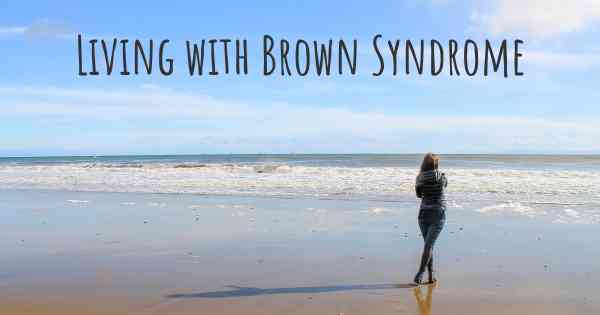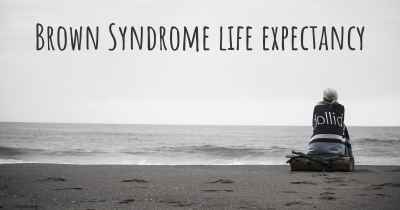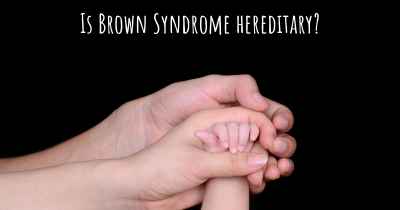Living with Brown Syndrome. How to live with Brown Syndrome?
Can you be happy living with Brown Syndrome? What do you have to do to be happy with Brown Syndrome? Living with Brown Syndrome can be difficult, but you have to fight to try to be happy. Have a look at things that other people have done to be happy with Brown Syndrome

Living with Brown Syndrome
Brown Syndrome is a rare eye condition that affects the movement of the eye muscles. It is characterized by limited or no ability to move the affected eye upwards. Living with Brown Syndrome can present challenges, but with proper understanding and management, individuals with this condition can lead fulfilling lives.
Understanding Brown Syndrome
Brown Syndrome is typically present from birth or develops during early childhood. It is caused by a problem with the superior oblique tendon, which is responsible for the upward movement of the eye. The exact cause of Brown Syndrome is not always known, but it can be associated with genetic factors or certain medical conditions.
Symptoms and Diagnosis
The primary symptom of Brown Syndrome is the inability to elevate the affected eye. This limitation may be more noticeable when looking upwards or when attempting to follow objects in an upward direction. Other symptoms may include double vision, eye pain, or a head tilt to compensate for the limited eye movement.
If you suspect you or your child may have Brown Syndrome, it is important to consult with an ophthalmologist. They will perform a comprehensive eye examination, including a detailed medical history, visual acuity tests, and specialized tests to assess eye movement. This will help in confirming the diagnosis and determining the severity of the condition.
Living with Brown Syndrome
While Brown Syndrome cannot be cured, there are strategies and treatments that can help manage the condition and improve quality of life:
1. Regular Eye Examinations:
It is crucial to have regular eye examinations to monitor the progression of Brown Syndrome and identify any potential complications. Your ophthalmologist will recommend the appropriate frequency of visits based on your specific needs.
2. Eye Exercises:
Eye exercises can be beneficial in improving eye coordination and strengthening the eye muscles. Your ophthalmologist or a vision therapist can guide you on specific exercises that may help alleviate some of the symptoms associated with Brown Syndrome.
3. Prism Glasses:
Prism glasses can be prescribed to help correct double vision and improve visual alignment. These specialized glasses contain prisms that alter the path of light entering the eyes, allowing for better fusion of images and reducing the impact of double vision.
4. Head Positioning:
Some individuals with Brown Syndrome may naturally adopt a head tilt to compensate for the limited eye movement. While this can provide temporary relief, it is important to avoid prolonged or excessive head tilting as it may lead to neck strain or discomfort. If a head tilt becomes habitual, your ophthalmologist may recommend vision therapy to help correct it.
5. Supportive Services:
Depending on the severity of Brown Syndrome and its impact on daily life, individuals may benefit from supportive services. These can include occupational therapy, vision therapy, or counseling to address any emotional or psychological challenges associated with the condition.
6. Education and Awareness:
It is important to educate yourself, your family, and those around you about Brown Syndrome. By raising awareness, you can foster understanding and support from your social circle, school, or workplace. This can help create an inclusive environment and reduce any potential stigma or misconceptions.
Conclusion
Living with Brown Syndrome may present challenges, but with proper management and support, individuals can lead fulfilling lives. Regular eye examinations, eye exercises, prism glasses, and supportive services can all contribute to improving the symptoms and overall well-being. Remember to consult with your ophthalmologist for personalized advice and guidance on managing Brown Syndrome.








